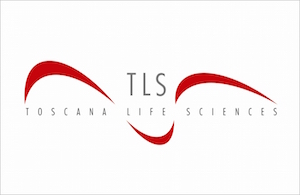The tympanic membrane, which has the extremely important function of transmitting vibrations generated by sound waves from the outer ear to the inner ear, whilst extremely thin, has a very complex structure: it is made up of two parts, the pars flaccida and the pars tensa, each with a triple-layer structure, in which between two epithelial layers there is an intermediate layer of connective tissue formed mainly by collagen type II fibers. In the pars tensa the different systems of radiated, circular and transversal fibres is of fundamental importance in the transmission of sound, and therefore in the functionality of the tympanic membrane. The formation mechanisms of such a structure during the development of the ear have not yet been clarified and this of course makes it even more difficult to develop a replacement material of the tympanic membrane that can adequately reproduce its functions imitating its morphology. Applicant has developed an apparatus and a process for in vitro preparation of a biomimetic tissue replacement of the tympanic membrane that allow to prepare, starting from mesenchymal stem cells, a material provided with characteristics reproducing those of the native membrane, and in particular the characteristics of the intermediate connective layer of the pars tensa of the eardrum, which are of essential importance in its functionality. The material obtained with the present process, using an innovative apparatus as bioreactor for the culture of starting stem cells, has shown that it possesses characteristics of dimensions, composition and spatial orientation of the collagen fibrils that are totally analogous to those detected by the anatomical studies of the native tympanic membrane, thus being able to also maintain its functional characteristics for correct transmission of sound.
The apparatus of the invention allows, thanks to a particular system of magnets, a cellular culture to be moved inside a growth solution without a contact with the culture itself. The apparatus has no external cables, and this makes it particularly suitable for use in humid environments, as well as allowing the necessary washing and sterilization operations before and after each cellular growth cycle.
The tensions-deformations produced by the apparatus of the invention on the support of the cells represent mechanical stimuli that contribute to differentiating the starting stem cells into fibroblasts of the tympanic membrane through the production of collagen of type II at the same time maintaining a fibroblast phenotype (non-chondrocytic). The mechanical stimuli guide the organisation of the collagen fibres on the support towards a radial and circumferential arrangement of the fibres, going to emulate the same organisation of the fibres observed in the native tympanic membrane.
N.A.
medical biotechnologies; apparatus and the process for in vitro preparation of biomimetic tissue prostheses







